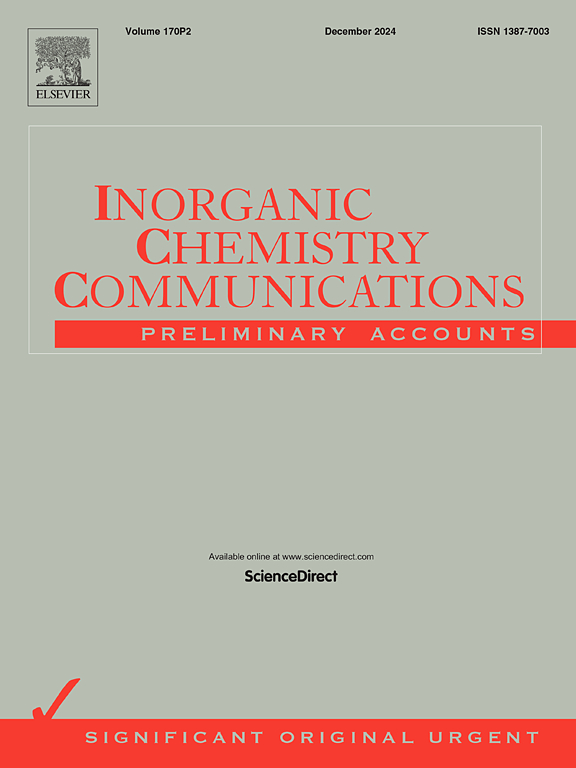天然摩洛哥磷酸盐用于Astrazon Orange G染料去除:性能分析和突破曲线建模
IF 4.4
3区 化学
Q1 CHEMISTRY, INORGANIC & NUCLEAR
引用次数: 0
摘要
本文介绍了用摩洛哥磷矿(MPR)作为吸附剂在固定床柱吸附法中去除废水中的阿斯特朗橙G (AOG)的初步实验结果。首先,利用傅里叶变换红外光谱(FTIR)、x射线衍射(XRD)和扫描电子显微镜(SEM)对MPR进行表征。氮气吸附分析表明,样品的BET比表面积和孔隙体积为18 m2。G−1和0.11 cm3。分别g−1。考察了初始AOG浓度(10-39 mg.L-1)、流速(5-30 mL.min -1)、床层高度(3.8-15 cm)等操作参数对固定床柱性能的影响。实验数据表明,吸附柱的最大容量在1.44 ~ 3.00 mg之间。G−1时,其去除率在20.01 ~ 38.8%之间。此外,停留时间分布(RTD)分析强调了流量对轴向弥散和流动均匀性的影响,证实了更高的流量可以降低停留时间的非均匀性,并使体系转向更类似于塞流的行为。采用Thomas、Bohart-Adams、Yoon-Nelson、床深服务时间(BDST)等动态吸附模型及其相应的修正对数模型,对固定床柱吸附试验得到的不对称突破曲线进行了预测。结果表明,MPR固定床柱去除AOG的对数模型拟合良好。结果表明,低比表面积、颗粒大小分布不均、颗粒内弱和表面扩散是造成不对称曲线的主要原因。此外,在室温条件下,用0.1 N的醋酸进行床层再生,结果表明,MPR可以连续4次高效重复使用。最后,摩洛哥天然磷矿可作为一种潜在的吸附剂用于去除废水中的偶氮染料。本文章由计算机程序翻译,如有差异,请以英文原文为准。

Natural Moroccan phosphate for Astrazon Orange G dye removal: Performance analysis and breakthrough curves modeling
This research paper presents the first experimental results obtained using Moroccan Phosphate Rock (MPR) as adsorbent for the removal of Astrazon Orange G (AOG) from wastewater in a fixed-bed column adsorption. Firstly, the MPR was characterized by different techniques, namely Fourier transform infrared spectroscopy (FTIR), X-ray diffraction (XRD), and scanning electron microscopy (SEM). Nitrogen sorption analysis shows that the BET specific surface area and pore volume of the sample are 18 m2.g−1 and 0.11 cm3.g−1, respectively. The effects of operating parameters on the fixed-bed column performance are examined, including initial AOG concentration (10–39 mg.L-1), flow rate (5–30 mL.min−1), and bed height (3.8–15 cm). Experimental data showed that the adsorption column’s maximum capacity varied between 1.44 and 3.00 mg.g−1, the rather than its removal efficiency was found to be varied from 20.01 to 38.8 %. Additionally, residence time distribution (RTD) analysis highlighted the influence of flow rate on axial dispersion and flow uniformity, confirming that higher flow rates reduce residence time heterogeneity and shift the system toward more plug-flow-like behavior. Dynamic adsorption models, including the Thomas, Bohart-Adams, Yoon-Nelson, Bed Depth Service Time (BDST), and their corresponding modified logarithmic models were applied to predict the asymmetric breakthrough curves obtained from the fixed-bed column adsorption tests. According to the results, MPR fixed-bed column for AOG removal was well fitting logarithmic models. It can be concluded that the low specific surface area, heterogeneous particle size distribution, weak intraparticle, and surface diffusion of MPR were responsible on the asymmetrical curves. In addition, the bed regeneration was conducted at room temperature using acetic acid (0.1 N), and the results showed that the MPR could be efficiently reused for four consecutive cycles. Finally, the natural Moroccan phosphate rock could be employed as a potential adsorbent to remove azo dyes from wastewater.
求助全文
通过发布文献求助,成功后即可免费获取论文全文。
去求助
来源期刊

Inorganic Chemistry Communications
化学-无机化学与核化学
CiteScore
5.50
自引率
7.90%
发文量
1013
审稿时长
53 days
期刊介绍:
Launched in January 1998, Inorganic Chemistry Communications is an international journal dedicated to the rapid publication of short communications in the major areas of inorganic, organometallic and supramolecular chemistry. Topics include synthetic and reaction chemistry, kinetics and mechanisms of reactions, bioinorganic chemistry, photochemistry and the use of metal and organometallic compounds in stoichiometric and catalytic synthesis or organic compounds.
 求助内容:
求助内容: 应助结果提醒方式:
应助结果提醒方式:


